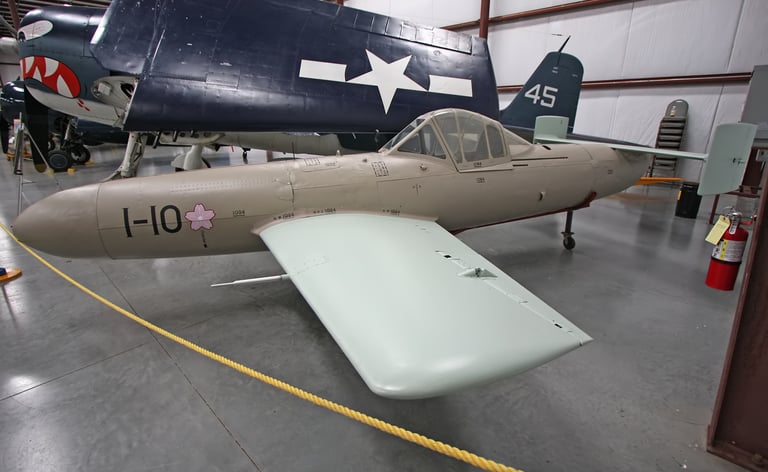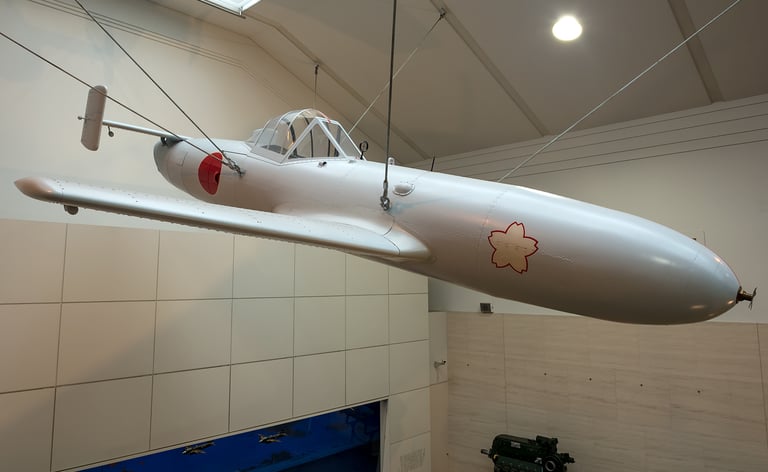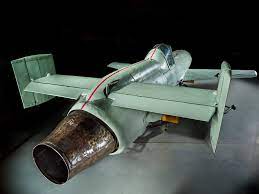MXY-7 okha
Fact for 30/6/2021
FACTS
The Japanese Yokosuka MXY7 Ohka (“Cherry Blossom”) was a piloted, rocket powered, anti-shipping Kamikaze suicide aircraft with a 1,200 kg / 2,646 lb ammonal warhead designed to unleash hell upon Allied fleets. The Ohka was essentially a piloted missile Yokosuka MXY7 Ohka were deployed by the Imperial Japanese Navy for use by Kamikaze units towards the end of World War Two. This was a time of desperation and a nearing defeat for the Japanese. Kamikaze is Japanese for “Spirit Wind” or “Divine Wind” and the Kamikaze units were officially titled Tokubetsu Kōgekitai (“Special Attack Unit”). As skilled pilot numbers and quality combat aircraft diminished with loss after loss against superior Allied numbers and equipment




the Japanese turned to a perceived way to put unskilled pilots to maximum use flying obsolete aircraft packed with high explosives, bombs and fuel as suicide pilots. Captain Motoharu Okamura, a distinguished Japanese military aviator and commander of the 341st Tateyama Kōkūtai (Air Group) in June 1944 is said to have first come up with the Kamikaze concept and develop training programs for attacking Allied shipping.
Anywhere up to 4,000 Kamikaze pilots, mostly aged between 18 and 24 years old, senselessly died whilst leaving havoc and destruction in their wake during the final months of World War Two striking 474 Allied ships and killing 7,000 servicemen (a great expense in thousands of men and 2,500 aircraft for a relatively limited and wasteful 19% success rate per sortie according to Kamikaze: Japanese Special Attack Weapons 1944-45 by Steven J. Zaloga, Pg. 12). The first official organised Kamikaze attacks by the Japanese are said to have happened during the period of October 23rd – 26th, 1944 at the Battle of Leyte Gulf near the Philippines by 24 volunteer pilots of the 201st Navy Air Group, against a combined Australian and US naval force. The first major warship lost to a Kamikaze attack was the escort carrier USS St. Lo (CVE-63) struck by an Mitsubishi A6M Zero fighter at the Battle of Leyte Gulf on October 25th, 1944. Despite the battle ending in a resounding Allied victory, the relative success of this small Kamikaze group lead the Japanese commanders to support further attacks (the Japanese Imperial Army also conducted Kamikaze attacks during these final months of the war)


